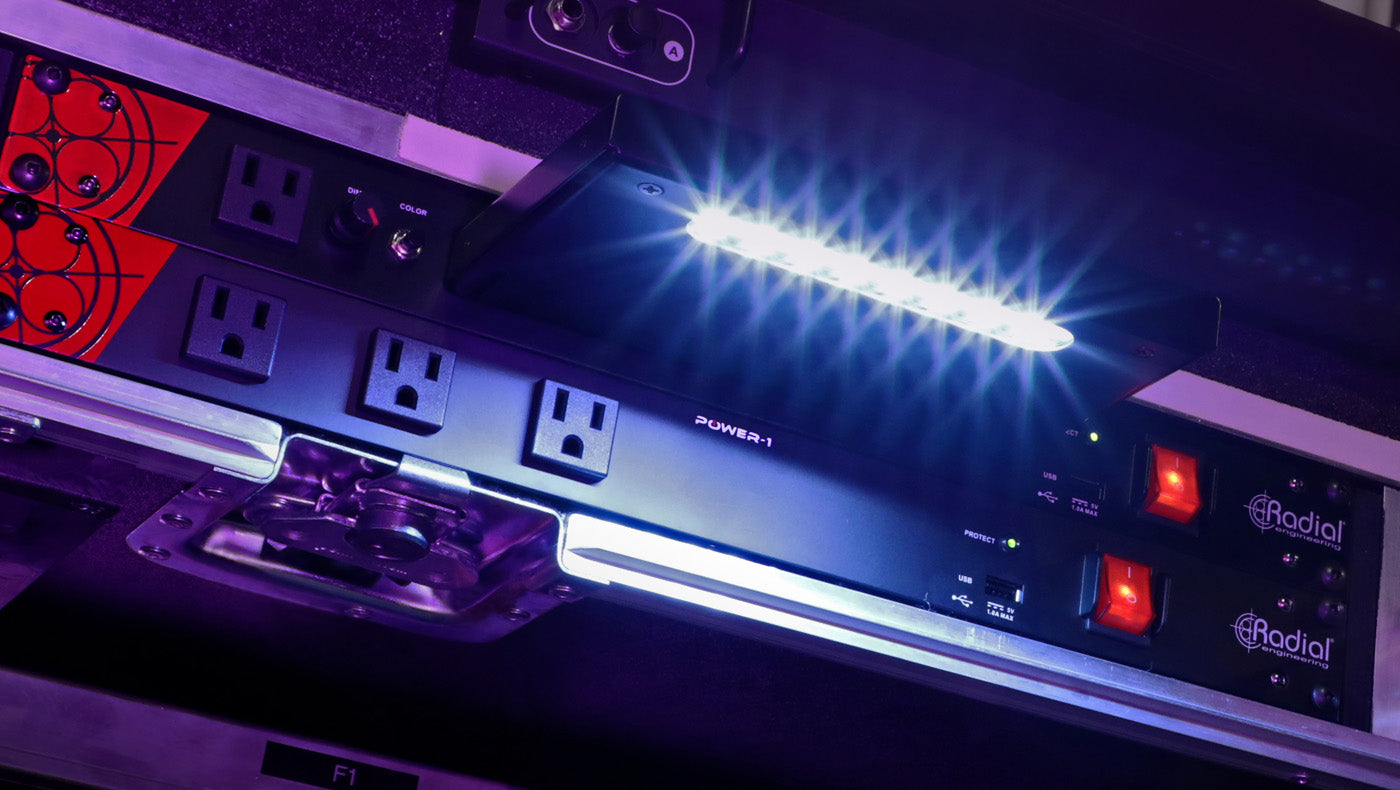The proper use of drum room mics is what separates the professionals from the amatuers in the world of recording real drums. There is no right or wrong way to do it, but if it is done really well, then the whole production glues together and sounds like an expensive recording.
Some things to keep in mind...
The Room
If you are recording drums, some kind of room is necessary. Even a 10'x10' will do. Obviously, the better your room is, the better sounds you can get from a room mic. That DOES NOT mean that you need to go out and purchase a silo just to record drums for massive sounds. You can use that 10'x10' to get really wide room sounds with a bit of placement technique.
Frequency Response
Frequency response is a fancy expression that translates to, "the range of frequencies/pitches that a microphone can pickup." The microphone's diaphragm is what picks up the sound. The materials and size of the diaphragm determine the frequency response and ultimately what the microphone sounds like. Darker sounding microphones tend to work better for drum room mics because they don't pick up the cymbals as much. Avoiding room mics becoming distant overheads will keep the cymbals focused.
Polar Pattern
Which polar pattern you should use in a room mic is very much dependent on the room itself. Some engineers love an omni condenser in the highest corners, some prefer one bi-directional ribbon with the active sides perpendicular to the kit and capturing the reflections from the walls. It really depends on the room shape, size and where the kit is placed.
Primary and Supplemental Microphones
Different rooms call for different mics. In some cases, you might be going for a huge, colorful sound. One way to go about that would be to use a stereo pair of ribbons as far from the kit as possible (but still in phase with each other) and putting a large diaphragm condenser in a closet or behind a corner and compress the snot out of it. The general idea with this particular scenario is to get the width from the spaced pair and the color from the microphone unconventionally placed.
Recommendations...

The Rode NTR is at the top of our list because it covers a lot of bases that make for a great room microphone. It is an active ribbon microphone, so it gives off a much higher signal and won't get noisy like a passive ribbon microphone. What makes the NTR stand out as a great room mic is the general frequency response, but also how it handles EQ. The direct sound from the ribbon is very smooth with lots of low end detail. There is a presence peak around 4kHz for just a bit of brightness. Like most ribbons, it is bidirectional and will pick up lots of room reflections.

ART's AR5 made the list of recommendations for a few reasons. It is active like the NTR, has a bit darker tone that helps separate the room mics from the overheads and has a crazy low price. These would be great as close room mics too because they can handle SPL of 150dB! You really can't beat a pair of these for less than $350.

As mentioned in the Supplemental Microphones section, you can get some great color from a large diaphragm condenser microphone placed unconventionally in the room. Any large diaphragm condenser will do, but we chose to show the Origin because of its very natural response and how easily it can be manipulated. It sounds great with just a small amount of processing, or even being crushed with 40dB of gain reduction. An honorable mention is the
Aston Spirit, the Origin's big brother. The Spirit is transformer balanced and has a much more colorful character. These are our top choices for drum room microphones. If you have questions about your specific room and recording setup, feel free to give us a call at 855-269-0474 or stop in our store in Downtown Appleton! Have questions on other microphones? Check out our other Buyer's Guides
here.
 The Rode NTR is at the top of our list because it covers a lot of bases that make for a great room microphone. It is an active ribbon microphone, so it gives off a much higher signal and won't get noisy like a passive ribbon microphone. What makes the NTR stand out as a great room mic is the general frequency response, but also how it handles EQ. The direct sound from the ribbon is very smooth with lots of low end detail. There is a presence peak around 4kHz for just a bit of brightness. Like most ribbons, it is bidirectional and will pick up lots of room reflections.
The Rode NTR is at the top of our list because it covers a lot of bases that make for a great room microphone. It is an active ribbon microphone, so it gives off a much higher signal and won't get noisy like a passive ribbon microphone. What makes the NTR stand out as a great room mic is the general frequency response, but also how it handles EQ. The direct sound from the ribbon is very smooth with lots of low end detail. There is a presence peak around 4kHz for just a bit of brightness. Like most ribbons, it is bidirectional and will pick up lots of room reflections.
 ART's AR5 made the list of recommendations for a few reasons. It is active like the NTR, has a bit darker tone that helps separate the room mics from the overheads and has a crazy low price. These would be great as close room mics too because they can handle SPL of 150dB! You really can't beat a pair of these for less than $350.
ART's AR5 made the list of recommendations for a few reasons. It is active like the NTR, has a bit darker tone that helps separate the room mics from the overheads and has a crazy low price. These would be great as close room mics too because they can handle SPL of 150dB! You really can't beat a pair of these for less than $350.
 As mentioned in the Supplemental Microphones section, you can get some great color from a large diaphragm condenser microphone placed unconventionally in the room. Any large diaphragm condenser will do, but we chose to show the Origin because of its very natural response and how easily it can be manipulated. It sounds great with just a small amount of processing, or even being crushed with 40dB of gain reduction. An honorable mention is the Aston Spirit, the Origin's big brother. The Spirit is transformer balanced and has a much more colorful character. These are our top choices for drum room microphones. If you have questions about your specific room and recording setup, feel free to give us a call at 855-269-0474 or stop in our store in Downtown Appleton! Have questions on other microphones? Check out our other Buyer's Guides here.
As mentioned in the Supplemental Microphones section, you can get some great color from a large diaphragm condenser microphone placed unconventionally in the room. Any large diaphragm condenser will do, but we chose to show the Origin because of its very natural response and how easily it can be manipulated. It sounds great with just a small amount of processing, or even being crushed with 40dB of gain reduction. An honorable mention is the Aston Spirit, the Origin's big brother. The Spirit is transformer balanced and has a much more colorful character. These are our top choices for drum room microphones. If you have questions about your specific room and recording setup, feel free to give us a call at 855-269-0474 or stop in our store in Downtown Appleton! Have questions on other microphones? Check out our other Buyer's Guides here.


